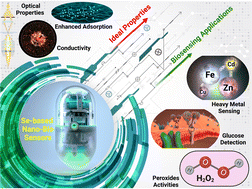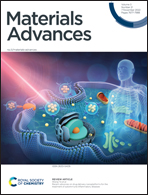Selenium-based nanomaterials for biosensing applications
Abstract
The unique chemical and physical features of nanomaterials make them ideal for developing new and better sensing devices, particularly biosensors. Various types of nanoparticles, including metal, oxide, and semiconductor nanostructures, have been utilized to manufacture biosensors, and each kind of nanoparticle plays a unique role in the sensing system. Nanoparticles provide critical roles such as immobilizing biomolecules, catalyzing electrochemical processes, enhancing electron transport between electrode surfaces and proteins, identifying biomolecules, and even functioning as the reactant for the catalytic reaction. Among all the potential nanosystems to be used in biosensors, selenium nanoparticle (SeNP) features have sparked a growing interest in their use in bridging biological recognition events and signal transduction, as well as in developing biosensing devices with novel applications for identification, quantification, and study of different analytes of biological relevance. The optical, physical, and chemical characteristics of differently shaped SeNPs opened up a world of possibilities for developing biosensors of biomedical interest. The outstanding biocompatibility, conductivity, catalytic characteristics, high surface-to-volume ratio, and high density of SeNPs have enabled their widespread use in developing electrochemical biosensors with superior analytical performance compared to other designs of biosensors. This review summarizes recent and ongoing advances, current challenges, and future research perspectives on real-world applications of Se-based nanobiosensors to detect biologically relevant analytes such as hydrogen peroxide, heavy metals, or glucose. Due to the superior properties and multifunctionality of Se-NPs biosensors, these structures can open up considerable new horizons in the future of healthcare and medicine.

- This article is part of the themed collection: Recent Review Articles


 Please wait while we load your content...
Please wait while we load your content...